- Some Thoughts on the Earliest Peopling of Ireland
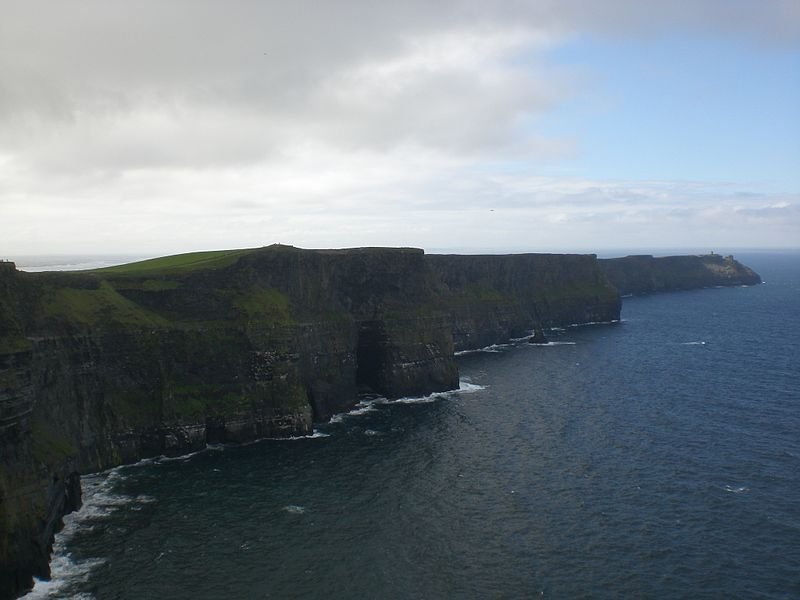
A Simple Question
When was the island of Ireland first colonized after the retreat of the ice sheets that marked the end of the latest glaciation? If you asked an antiquarian this question a mere century ago you might have received the following for an answer:
Partholan, with his wife, three sons, and 1,000 followers, landed at Inver Sceine (Bantry Bay) 2680 B.C. This was the first colony. They passed 300 years in Erin, and were carried off by a plague in one week—5,000 men and 4,000 women. The country remained waste for thirty years till Nemed came. (O’Halloran 1)
If you ask an archaeologist the same question today, the answer you will receive is more likely to be along these lines:
... the earliest Mesolithic is found at Mount Sandel on the River Bann in the northeast, excavated from 1973 to 1977. The dating here has been recently reviewed using Bayesian modelling (Bayliss and Woodman 2009). The original conventional radiocarbon dates were based on bulk charcoal that, in some cases, included significant numbers of hazelnut shells, mostly obtained from discrete layers in hearths and pits. New AMS dates are primarily from individual burnt hazelnut shells, often from the same context as the original conventional samples. The key conclusion is that the primary building of huts occurred over less than a century, with later occasional reuse of the site for up to five hundred years. The earliest date is ~7780 calBC (8800 BP) with the majority between 7700 and 7500 calBC (8700 to 8500 BP). Comparison of the industry with that in Britain, and consideration of new dates there, leads to the conclusion that slightly earlier and simpler assemblages may remain to be found in Ireland. (Meiklejohn & Woodman 24)
The contrast between these two approaches to the past could hardly be greater. Before the development of the scientific method of inquiry, the Irish antiquarian curious about the early history of his native land was left with only one resource: our native written records. There are quite a few of these—enough to keep a diligent historian busy for a lifetime. The most famous of them, a 12th-century compilation of Middle Irish prose and poetry known as Lebor Gabála Érenn, or The Book of Invasions, was the source for the first of our two quotations above. This work purports to record the entire history of Ireland from the creation of the world down to the time of its compilation. The Reverend O’Halloran’s unquestioning acceptance of this text as an accurate and trustworthy record of the history of Ireland was perhaps a little outdated in 1916, but it is a fair reflection of the reverence in which most native antiquarians held our written traditions before the 20th century.
For the majority of these early historians, it was not the Ice Age that divided history from prehistory but the Universal Flood of Noah. The Old Testament was the ultimate and indisputable source of native Irish history and chronology. It was perhaps no accident that James Ussher, the scholar who famously calculated that the creation of the world took place in 4004 BCE (Ussher 14), was an Irishman. Irish historical tracts are replete with quasi-Biblical “begats”, genealogies, dynasties and synchronisms. R A S Macalister, who translated several recensions of The Book of Invasions into English, was in no doubt as to the influence scripture had on the “saints and scholars” who compiled these native chronicles:
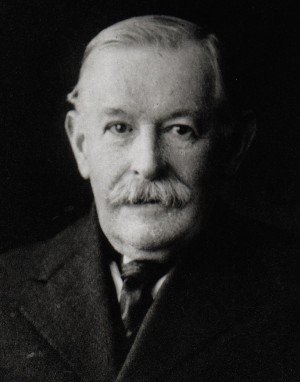
It does not require any great insight to see that the book is in reality a combination of two originally independent documents. The block of material, sections III to VII, has been interpolated; sections II and VIII run on continuously, and were no doubt at one time in immediate connexion. If we cut the interpolated sections out, we find ourselves left with a History of the Gaedil, based upon the history of the Children of Israel as it is set forth in the Old Testament, or (perhaps more probably) in some consecutive history paraphrased therefrom. (Macalister 1938:xxvi-xxvii)
We start with a Liber Occupationis Hiberniae [Book of the Taking of Ireland], a sort of quasi-historical romance, with no backing either of history or tradition; an artificial composition, professing to narrate the origin of the Gaedil onward from the Creation of the World (or the Flood), their journeyings, and their settlement in their “promised land,” Ireland. This production was a slavish copy, we might almost say a parody, of the Biblical story of the Children of Israel. (Macalister 1938:xxx-xxxi)
Macalister’s dismissive attitude to these written traditions reflects the growing skepticism with which they were viewed by a new wave of archaeologically trained historians. Macalister himself was an archaeologist, with experience in the field in both Ireland and Palestine, and the disparity between what he read in the ancient manuscripts and what he dug out of the ground only exacerbated his native contrariness:
It must be understood quite clearly that there is not a single element of genuine historical detail, in the strict sense of the word, anywhere in the whole compilation. After many efforts, I find myself forced to the conclusion that it is altogether chimerical to attempt to draw any correlation between the successive waves of historical immigration, to which Archaeology and Ethnology introduce us, and the wild tales contained in this book. These latter are partly mythological, partly ritual in their origin ... (Macalister 1939:252)
Macalister probably represents the most extreme form of this skepticism. While later scholars continue to be critical of these texts, they are reluctant to dismiss them as complete fabrications. This softening of attitude is particularly true of the philologists—the Celticists, who made the study of the Irish language and its written records their life’s work. The greatest of these was undoubtedly T F O’Rahilly, whom I have already had occasion to quote several times in this series. His historical model was inferred from purely literary and linguistic evidence. He barely acknowledges the findings of the archaeologists and refrains from any attempt to reconcile his results “with any of the conflicting theories put forward from time to time by archaeologists (O’Rahilly vi):
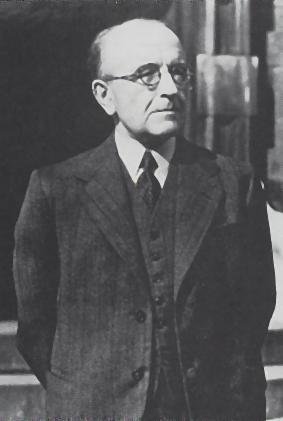
As an old-fashioned believer in the principle of the shoemaker sticking to his last, I have throughout the present book deliberately refrained from trespassing on the domain of archaeology ... It is no disparagement to archaeology to say that its evidence from prehistoric times is often unsatisfying; not only is it apt to be inconclusive or equivocal, but from the nature of the case it tends to be dry and lifeless as well. (O’Rahilly 430)
It is precisely because archaeology has failed to corroborate O’Rahilly’s model that historians remain skeptical about it. This disparity between archaeology and historiography, which so exasperated Macalister, may be likened to a circle that needs squaring: is there any way in which we can save both? Can we eat our cake and have it? Can the philologist be reconciled with the archaeologist?
The crux of the problem, I think, lies in the widespread belief that what the archaeologists tell us about the prehistory of Ireland is well-grounded in science—and science trumps testimony. Take another look at the second answer to our initial question above. Archaeologists are supremely confident that there were people in Ireland around 7780 BCE because that date is supported by the twin sciences of radiocarbon dating and dendrchronology. (The abbreviation “calBC” means “calibrated years before Christ” and refers to the practice of using tree-ring dating, or dendrochronology, to correct radiocarbon dates.)
But are these sciences any more trustworthy than the written testimony of a medieval monk? I believe they are not. It would require too long a digression to justify this belief here, so let us put it aside for another day. In the meantime I refer the reader to Charles Ginenthal’s critiques of radiocarbon dating (Pillars of the Past, Volume I, pages 107-142) and dendrochronology (Pillars of the Past, Volume II, pages 347-372).
So what is the answer to our simple question: When was the island of Ireland first colonized following the retreat of the ice sheets?

In Search of a Terminus Ante Quem
If we cannot trust radiocarbon dating or dendrochronology, who or what can we trust? We are justifiably skeptical when our native chroniclers tell us that Partholón was the first to colonize Ireland after the Flood, not because we doubt that there ever was any such Flood, but rather because these chroniclers are writing about events that allegedly occurred centuries or millennia before their own time. How do they know that Partholón even existed? What are their sources? Where is their evidence? But when these same chroniclers compile a record of events occurring in their own time—for example, the Annals of Ulster—we are justifiably less skeptical. For instance, the compilers of the Annals of Ulster record that a solar eclipse occurred on 29 October 878. Modern science confirms that a total eclipse of the Sun did indeed occur on that day and that it was observable—weather permitting—from Ulster. It seems reasonable to conclude that the original annalist observed this eclipse with his own eyes and made a contemporary record of it, and that that record was the source for the entry in the oldest extant copy of the Annals of Ulster, which was compiled by the scribe Ruaidhri Ó Luinín in the late 15th century and is now housed in the Library of Trinity College Dublin.
This is the sort of evidence we would like to have for the first post-glacial peopling of these islands, and the obvious place to conduct a search for such evidence is in the writings of the Classical authors—the ancient Greeks, Romans, Phoenicians, etc. Happily, this work has already been done for us.
Ireland and the Classical World
In his book Ireland and the Classical World (2001), Philip Freeman of the University of Texas, has collated all known references to Ireland in Classical literature from earliest times to the early fifth century of the Common Era. The very first sentence on page one of this work reads:
Philology and archaeology ideally should work together to integrate literary and material evidence in the investigation of any subject. (Freeman 1)
I couldn’t have put it any better myself. Freeman’s researches are summarized in the following table:
| Name | Author | Work | Date |
|---|---|---|---|
| Insula sacra | Avienus | Ora maritima | ?? |
| Ιρις | Diodorus Siculus | Bibliotheca historica | 60-30 BCE |
| Hibernia | Julius Caesar | Gallic War | 50 BCE |
| Ἰερνη | Strabo | Geography | 19 CE |
| Iernē | Isodorus | Geographi Graeci Minores | 1st century CE |
| Iuverna | Pomponius Mela | De chorographia | 44 CE |
| Hibernia | Pliny the Elder | Natural History | 77 CE |
| Iernē | Pseudo-Aristotle | De mundo | 50 BCE – 100 CE |
| Hibernia | Tacitus | Agricola, Annals | 98 CE, 118 CE |
| Iuverna | Juvenal | Satires | 118 CE |
| Bretanides | Dionysius Periegetes | Orbis descriptio | 2nd century CE |
| Μικρα Βρεττανια, Ιουέρνια νησος Βρετανικη | Claudius Ptolemaeus | Almagest, Geography | 150 CE |
| Hibernia | Apuleius | De mundo | 160-170 CE |
| Iwern-, Iern- | Herodian | De prosodia catholica | 160-180 CE |
| Hibernia | Solinus | Collectanea rerum memorabilium | 200 CE |
| Hiberni | - | Panegyric on Constantius Caesar | 297 CE |
| Mare Hiverione | - | Maritime Itinerary | 3rd century CE |
| Hibernia | - | Panegyric on Constantine Augustus | 310 CE |
| Scoti | - | Nomina provinciarum omnium | 312 CE |
| Iernē | - | Orphic Argonautica | 4th century CE |
| Scoti | Pacatus | Panegyric on Theodosius | 389 CE |
| Scotti, Atticotti | Ammianus Marcellinus | History | 392 CE |
| Iuverna | - | Historia Augusta: Tacitus | 400 CE |
| Scotia | Pseudo-Hegesippus | Jewish War | 400 CE |
| Atticotti, Scotti | Jerome | Adversus Jovinianum, Epi-stles, Commentary on Jeremiah | 390-415 CE |
| Scottus | Prudentius | Apotheosis | 390-395 CE |
| Scotti | Symmachus | Epistles | 393 CE |
| Hibernia | Servius | Commentary on Virgil’s Georgics | 400 CE |
| Scotti, Hiverne | Claudian | Panegyric on the Third Consulship of Honorius, Panegyric on the Fourth Consulship of Honorius, Epithalamium to Palladius, On Stilicho’s Consulship, Gothic War | 396-402 CE |
| Iwernia | Marcianus | Periplus of the Outer Sea | 400 CE |
| Iernē | Stobaeus | Anthologium | 410 CE |
| Hibernia | Orosius | Historiae adversum paganos | 417 CE |
| Iwernia | Pseudo-Agathemerus | Geographia compendaria | 200-500 CE |
[Freeman, Appendix Two]
As you can see, the Classical authors used several different names to designate the island of Ireland:
| Name | Authors |
|---|---|
| Insula sacra | Avienus |
| Iris (Ιρις) | Diodorus Siculus |
| Iernē (Ἰερνη) | Strabo, Isodorus, Pseudo-Aristotle, Herodian, Orphic Argonautica, Stobaeus |
| Iwernia (Ιουέρνια) | Ptolemy, Herodian, Marcianus, Pseudo-Agathemerus |
| Iuverna | Pomponius Mela, Juvenal, Historia Augusta |
| Hibernia | Caesar, Pliny, Tacitus, Apuleius, Solinus, Panegyric on Constantine Augustus, Servius, Orosius |
| Hiverne | Claudian |
| Hiverione | Maritime Itinerary |
| Scotia | Pseudo-Hegesippus |
| Micra Brettania (Μικρα Βρεττανια) | Ptolemy |
[Freeman, Appendix Three]
For the time being, let us ignore the first name in Freeman’s list and restrict our survey to the others. The reason for this will become apparent later on.
Celtic Names
The most notable thing about these Classical names for Ireland is their linguistic affinity: they are all of patently Celtic origin. According to O’Rahilly’s historical model, the dominant people in Ireland when the Classical world first learned of this land were a Celtic tribe known in later tradition as the Érainn. He believes that the original form of this name was Iverni and that Ptolemy’s description of Ireland in his Geography makes this clear:
Iverni Their name has survived as Érainn, which goes back to a variant form *Ēvernī ... While the evidence of the names in Ptolemy’s account of Ireland shows plainly that the Ireland he describes was a Celtic-speaking Ireland, none of the names has anything peculiarly Goidelic about its form. On the contrary, there is positive evidence to show that the Celtic spoken in Ptolemy’s Ireland was of the Brittonic type ... the tribal name Iverni is Brittonic in form (= Goidelic *Ēvernī) .... (O’Rahilly 9, 17)
Later, O’Rahilly explains how this tribal name gave rise to several of the Classical names for Ireland:
From the account of Ireland which Ptolemy has preserved, we have seen good reason to believe that the Érainn were the dominant power in Ireland ca. 325 B.C. At that time the name Iverni had two meanings; it was applied to the people of Ireland (*Īvernā, > Gr. ’Ιέρνη) in general, and in particular to a body of people who were settled in what is now County Cork. (O’Rahilly 83)
The name ’Ιέρνη, ‘Ireland’, had probably been picked up by the Massaliote Greeks, from merchants and from their Celtic neighbours, as early as the fifth century B.C. [Footnote 2: ... Owing to the loss of so much of the work of the early Greek geographers ’Ιέρνη is not attested before Strabo (contemporary with Augustus). The digamma had disappeared from Ionic as early as the seventh century B.C.; and when the Massaliote Greeks first heard the name Īvernā, they presumably had no means of indicating the -v- and simply dropped it. Later the Greeks adopted the expedient of representing v in foreign languages by ου.] ... Ptolemy, or some near predecessor of his, modernized ’Ιέρνη into ’Ιουερνία .... (O’Rahilly 41-42)
This, I believe, is a reasonable explanation of how the native Celtic name Īvernā gave rise to the Classical variants ’Ιέρνη (Iernē), ’Ιουερνία (Iwernia) and Iuverna. The most popular name for Ireland among Latin authors, Hibernia, is clearly of the same etymology. Although this is undoubtedly a Latinization of the Greek ’Ιουερνία, it has probably been corrupted by a false etymology. The Roman writers supposed incorrectly that the name was derived from hibernus, the Latin for winter. To the ancient Romans Ireland was an unappealing land of perpetual winter. Perhaps that is why they never bothered to add it to their domains.
It is probably safe to assume that Claudian’s Hiverne and the Maritime Itinerary’s Hiverione have similar etymologies.
If O’Rahilly is correct that “the digamma had disappeared from Ionic as early as the seventh century B.C.”, then we probably cannot push the origin of any of these Classical names for Ireland further back than 600 BCE.
Ιρις
Diodorus Siculus wrote his Historical Library between 60 and 30 BCE. In Book V he refers to an island populated by Britons [Πρεττανοι, Prettanoi] who practise cannibalism. He calls this land_Ιρις_ (Iris). This is usually understood to be another Greek name for Ireland, though not everyone accepts that it is a reference to Ireland. If it is a reference to Ireland, then it is one of the earliest surviving.
Ιρις sounds very Celtic—very Irish, even—but it is unique and of obscure origin. Considering how close it is to later native names for the island—Ériu, Erin, Ireland—it is curious that it makes no other appearances in Classical literature.
Scotia
Several scholars of the Common Era referred to the Irish as Scotti (Scots) and at least one author referred to Ireland as Scotia. It is widely accepted that these Latin terms were originally applied to Ireland and the Irish, and only came to be associated with Scotland in the later Middle Ages. Nevertheless, the etymology of these words is still obscure. The evidence suggests that it was the Irish who borrowed these terms from the Romans and incorporated them into their mythological history.
Priteni
Dionysius Periegetes’ Bretanides and Ptolemy’s Μικρα Βρεττανια (Micra Brettania) are obvious references to the earliest known Celtic inhabitants of Ireland and Britain, the Priteni or Pretani. These Celtic people are believed to have given their name to the island of Britain, though this is still disputed by some scholars:
The close resemblance, both in form and meaning, between *Pritanī (Πρετανοί) and Britannī suggests the question whether both names were not originally one ... The facts, certain or probable, regarding the two names may be recapitulated. Pritanī or Pritenī , the name of a people dominant in both Britain (Albiū) and Ireland (Īvernā), was borrowed by the Greeks as Πρετανοί. The borrowing may have taken place as early as 500 B.C. (p. 84). In the course of time new invaders from Gaul deprived the Pritani of their dominion over the south of Britain, though they retained their hold on the north of the island ...
The two names, Pritani and Britanni, both mean the same thing, viz. ‘the inhabitants of Britain’. They differ in point of date; the former, in its Greek shape Πρετανοί, is attested. indirectly, several centuries earlier than the latter. In classical writings a variety of forms is found, but there is never any distinction of meaning between the various forms. The Greeks called Britain and Ireland αί Πρετ(τ)ανικαι (or Βρεττ-) νησοι and Πρετ(τ)ανίδες (or Βρεττ-) νησοι, which Pliny latinizes as Britanniae and other latin writers as Britanniae insulae. (O’Rahilly 448-450)
It is possible that Ptolemy’s Μικρα Βρεττανια , or Little Britain, is not a reference to Ireland at all, but to Scotland.
Avienus
Our final port of call is paradoxically the most important one. The late Latin poem Ora Maritima (“The Maritime Coast”) is a rambling periplus (ie a manual of sailing directions) for the shores of western Europe. The author of this work, Rufius Festus Avienus, is usually placed in the mid-4th century CE. This is quite late, but he is believed to have had access to Greek and Carthaginian sources dating back to 500 BCE, if not earlier. So, although this particular work belongs near the end of the Roman period, it may contain quotations from some of the earliest documents that refer to Ireland or the Irish by name.
Among Avienus’s other works is a liberal translation into Latin of the Greek poem Οικουμενης Περιηγησις (Oikoumenēs Periēgēsis ) by the 2nd-century Alexandrian traveller Dionysius Periegetes. You may recognize this author’s name from Freeman’s lists above, where Dionysius’s work is referred to under a Latin title. Avienus’s translation—perhaps paraphrase would be a more accurate term—is usually known as Orbis Terrae Descriptio. The original Greek is extant, but only the first book of Avienus’s translation has survived. Dionysius (verses 565-569) briefly refers to two islands in the Atlantic, commonly identified with Britain and Ireland:
’Αλλαι δ’ ’Ωκεανοιο παραι βορεώτιδας ακτας
δισσαι νησοι έασι Βρετανίδες, αντία ‘Ρήνου;
κειθι γαρ ‘υστατίην απερεύγεται εις ‘άλα δίνην.
τάων τοι μέγεθος περιώσιον; ουδέ τις άλλη
νήςοις εν πάσησι Βρετανίσιν ισοφαρίζει.
Two other islands, however, the Britannic, lie beyond the northern headlands of the ocean, opposite the Rhine; for there it disgorges its last eddy into the salt sea. The size of these islands, I assure you, is immense; and not one of all the other islands is equal to the Britannic. [Dionysius Periegetes, Οικουμενης Περιηγησις 565-569]
Avienus was not satisfied with a simple Latin translation of the original Greek. Instead, he expanded Dionysius’s text with many details of his own:
Eminus hic aliae gelidi prope flabra aquilonis
Exsuperant undas et vasta cacumina tollunt.
Hae numero geminae, pingues sola, caespitis amplae,
Conditur occidui qua Rhenus gurgitis unda,
Dira Britannorum sustentant agmina terris.
Hic spumosus item ponti liquor explicat aestum,
Et brevis e pelago vertex subit: hic chorus ingens
Feminei coetus pulchri colit orgia Bacchi :
Producit noctem ludus sacer: aera pulsant
Vocibus, et crebris late sola calcibus urgent.
Non sic Absynthi prope flumina Thracis almae
Bistonides; non, qua celeri ruit agmine Ganges,
Indorum populi stata curant festa Lyaeo.
Further on, near the icy blasts of the North Wind, two other islands tower above the waves and thrust up their vast peaks. Their soil is fertile, and they are rich in turf. Situated in the region where the Rhine disgorges itself into the waters of the Western ocean, they nourish the ferocious hosts of the Britanni. Here too, the foaming waters of the sea release their tides, and a low peak emerges from the deep: here numerous choirs of women celebrate the feasts of the beautiful Bacchus. These sacred games continue into the night. They strike the air with their cries, and make the earth resound with the repeated noise of their footsteps. Neither the women of the Bistonians near the Absinthe River in Thrace, nor the Indians who inhabit the banks of the Ganges with their impetuous waves observe with as much zeal the festivals instituted in honor of Lyaeus [Bacchus]. [Avienus, Orbis Terrae Descriptio 745-757]
Dionysius’s dates are uncertain, but current scholarly opinion places him in the reign of the Roman Emperor Hadrian (117-138 CE). Avienus is thought to have lived around the time of the Valentinian Dynasty (364-392).
Ora Maritima
Let us turn our attention now to Avienus’s principal work, the Ora Maritima. For the most part, the 705 lines of this poem describe the coast of Europe from Gades (Cadiz) in Iberia to Massalia (Marseille) in Gaul. There are, however, frequent digressions to describe other parts of the European coastland and offshore islands. Having described a group of islands called the Oestrymnides, Avienus continues:
ast hinc duobus in sacram, sic insulam
dixere prisci, solibus cursus rati est.
haec inter undas multam caespitem iacet,
eamque late gens Hiernorum colit.
propinqua rursus insula Albionum patet.
Tartessiisque in terminos Oestrumnidum
negotiandi mos erat. Carthaginis
etiam coloni et vulgus inter Herculis
agitans columnas haec adibant aequora,
quae Himilco Poenus mensibus vix quattuor
ut ipse semet rem probasse rettulit
enavigantem, posse transmitti adserit.
From here it is a two-day voyage to the Sacred Isle, as the ancients called it. It lies amongst the waves, rich in turf. The Hierni people inhabit it extensively. The neighbouring island of the Albiones extends back [towards the continent]. The Tartessians were accustomed to trade to the ends of the Oestrymnides Islands. Also, the colonists and people of Carthage who dwell within the Pillars of Hercules used to frequent these waters. As Himilco the Carthaginian asserts, scarcely four months would suffice [for such a voyage], something he himself proved by sailing there and back. [Avienus, Ora Maritima 108-119]
There’s quite a lot to digest in this short passage. The identity of the Oestrymnides is uncertain. They have been variously identified with islands off the coast of Brittany and the Scilly Isles off the coast of Cornwall. Tartessos was—allegedly—a city in Iberia, but by the time of Avienus it no longer existed. Its historicity and location are still disputed today. Himilco we shall deal with shortly.
What makes Avienus particularly valuable to us is his reference to a Sacred Isle inhabited by the Hierni and a nearby island inhabited by the Albiones. The names of these two nations are indisputably Celtic and obviously refer to the inhabitants of Ireland and Britain (Freeman 28-34). As we have already seen, one of the earliest Greek names for Ireland, attested by Strabo in his Geography, is Iernē (Ἰερνη). This is certainly Celtic, and probably goes back to the native name *_Īvernā, but it is easy to see how the Greeks may have misinterpreted it:
Avienus’s name for Ireland is sacra insula ... presumably Ἰερνη νησος had been corrupted to ‘ιερα νησος [sacred island] in the Greek text he had before him. (O’Rahilly 83. See also Freeman 29).
Avienus’s attrbution of this name to the ancients (prisci) together with his reference nine lines later to Himilco’s having sailed there and back suggest that these names are drawn from an early source. In the 4th century Ireland and Britain were generally known by the Latin names Hibernia and Britannia and Avienus would surely have used these if he was not following a much older source.
Perhaps even more revealing than his description of Ireland as the Sacred Isle is Avienus’s description of Britain as the land of the Albiones. Albion is still used today as poetic name for Britain, and it has a long pedigree:
The oldest name of the island of Britain is recorded by classical writers as Albion (Gr. ’Αλβιων, ’Αλουιων, ’Αλβιον). This name, which represents Celt. *Albiū, gen. *Albionos, has been preserved, but with altered meanings, in Irish and Welsh. (O’Rahilly 385)
The etymology of the name Albion is disputed, but it is tempting to see in it a reference to the White Cliffs of Dover, which are visible from the European mainland. If this is the correct etymology, then *Albiū was probably a name the Celts had given to Britain before they crossed the Channel and colonized it. Avienus’s use of this term rather than the more familiar Britannia is further evidence that he did indeed have access to a very old source.
Alternative etymologies for Albion and Iernē are given by John Koch of the Department of Celtic Languages and Literature at Harvard University:
In a general way, the oldest recorded place and ethnic names of the British Isles are already well understood. *Albijū gives Welsh elfydd “the world,” and may derive from an Indo-European root meaning “white.” It survives in [Middle Irish] as Albu, Alba, signifying both the whole of Britain and, more specifically, Pictland, later Scotland—i.e. Britain north of the Forth. *Īwerijū (>Ériu), attested as Romanized Īveriō, means the “Fat” or “Fertile Country”; cf. [Old Irish] íriu “earth, etc.” (Koch 1)
As the island of Britain can be seen from the European mainland, it stands to reason that the Celtic-speaking inhabitants of Europe would have had a name for it before they colonized it, so I am inclined to accept the earlier etymology.
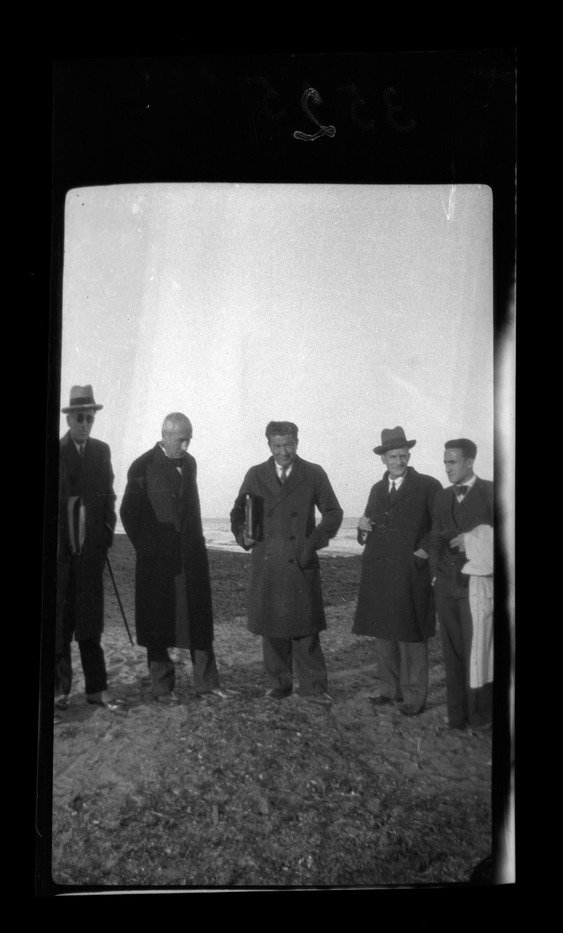
The Massaliote Periplus Theory
In 1922, the German archaeologist and historian Adolf Schulten proposed that Avienus’s Ora Maritima was essentially a versification of a lost periplus devised in the 6th century BCE by sailors from the Greek colony of Massalia (now Marseille in the south of France):
The German historian and archaeologist Adolf Schulten made the first serious study of the Ora Maritima. He proposed that Avienus had versified a sixth century BC Greek sailing manual, which has become known as the Massiliote Periplus. It was identified as Massiliote in origin because nearly eighty lines of text are devoted to Massalia and the Rhone River. In addition, the stretch of coastline lying immediately to the west of the city is described in richer detail than shores situated further away. Schulten maintained that the Massiliote Periplus was written about 530 BC, because its place-names are archaic. He also believed that Greek knowledge of the Atlantic coast of Europe must have been obtained prior to about 500 BC, because at this time Carthage closed the Strait of Gibraltar to foreign shipping. This, he argued, prevented Greek trade with the Tartessians, who inhabited the Guadalquivir region of south-western Spain. He further concluded that the periplus was written before the foundation of the Massiliote colonies of Emporion and Rhode, because they are not mentioned by Avienus. If Schulten’s analysis is correct, his Massiliote Periplus, abstracted in the verse of the Ora Maritima, contains the earliest reference to the British Isles. (John Taylor 5)
Freeman (32), however, makes the valid point that the references to Britain and Ireland represent a digression from the sailing directions that relate to Massalia and the European coastline. Even if Avienus did use an ancient Massaliote periplus to describe the coast from Gades to Massalia, he may still have drawn his information about Britain and Ireland from a more recent source.
In 1934, the French scholar André Berthelot brought out a French edition of Avienus’s Ora Maritima. In his commentary on the poem, he considered and rejected Schulten’s hypothesis of a Massaliote periplus, but accepted that Avienus had drawn upon an eclectic set of ancient sources. Another scholar, Rhys Carpenter, went further and not only rejected Schulten’s hypothesis but proposed that the principal source of Avienus’s information was Pytheas of Massalia, of whom more anon.
In lines 42–50 of his Ora Maritima, Avienus does actually provide us with a list of his sources (for the dates, see Taylor 43):
- Hecataeus of Miletus (c 500 BC)
- Hellanicus of Lesbos (c 440 BC)
- Phileas of Athens
- Scylax of Caryanda (c 500 BC)
- Pausimachus of Samos
- Damastes of Sigeum (c 430 BC)
- Bacoris of Rhodes
- Euctemon of Athens
- Cleon of Sicily
- Herodotus (c 450 BC)
- Thucydides (c 430 BC).
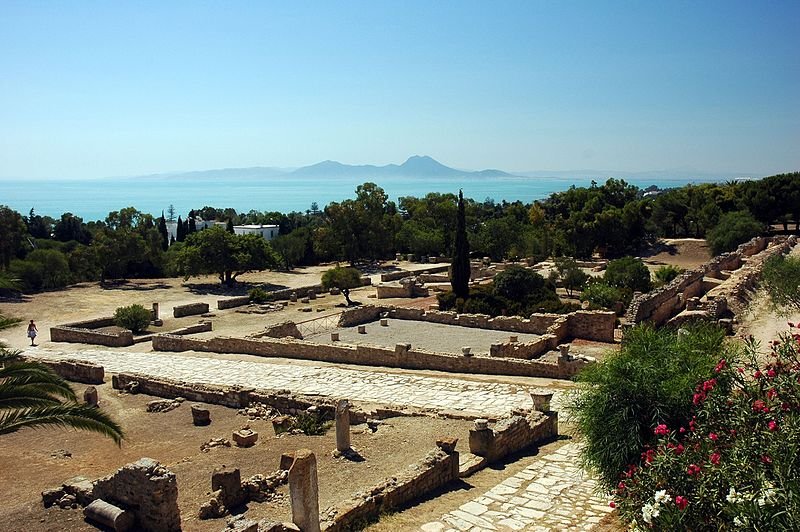
Himilco
Avienus never mentions Pytheas, but on three occasions he purports to quote the Carthaginian navigator [Himilco](https://en.wikipedia.org/wiki/Himilco. (Curiously, Himilco’s name does not appear in Avienus’s list of his sources.) The first of these quotes relates directly to Britain and Ireland:
quae Himilco Poenus mensibus vix quattuor
ut ipse semet rem probasse rettulit
enavigantem, posse transmitti adserit.
As Himilco the Carthaginian asserts, scarcely four months would suffice [for a voyage to Britain and Ireland], something he himself proved by sailing there and back. (Avienus 118-120)
Our only other Classical source for information on Himilco is Pliny the Elder:
While the power of Carthage was at its height, Hanno published an account of a voyage which he made from Gades to the extremity of Arabia; Himilco was also sent, about the same time, to explore the remote parts of Europe. (Pliny the Elder 2.67)
Hanno and Himilco are tentatively placed between about 550–450 BCE, depending on which source you care to follow. Pliny’s reference to Carthage being at the height of its power best fits the period after the First Sicilian War (480 BCE), during which Carthage recovered from a humiliating defeat to become the dominant power in the western Mediterranean. No account of Himilco’s voyages survives, but the possibility remains that he is the ultimate source of the earliest extant names for the islands and inhabitants of Britain and Ireland.
Herodotus, writing around 450-430 BCE,
As for Libya, we know it to be washed on all sides by the sea, except where it is attached to Asia. This discovery was first made by Necos, the Egyptian king, who on desisting from the canal which he had begun between the Nile and the Arabian gulf, sent to sea a number of ships manned by Phoenicians, with orders to make for the Pillars of Hercules [Strait of Gibraltar], and return to Egypt through them, and by the Mediterranean. The Phoenicians took their departure from Egypt by way of the Erythraean Sea [Red Sea], and so sailed into the southern ocean. When autumn came, they went ashore, wherever they might happen to be, and having sown a tract of land with corn, waited until the grain was fit to cut. Having reaped it, they again set sail; and thus it came to pass that two whole years went by, and it was not till the third year that they doubled the Pillars of Hercules, and made good their voyage home. On their return, they declared—I for my part do not believe them, but perhaps others may—that in sailing round Libya they had the sun upon their right hand. In this way was the extent of Libya first discovered.
Next to these Phoenicians the Carthaginians, according to their own accounts, made the voyage. (Herodotus 4:42-43)
Although Herodotus mentions no names, his allusion to the Carthaginians may be a reference to Hanno’s expedition. Necos must be either Necho I or Necho II. The conventional dates ascribed to these Pharaohs are not generally accepted by adherents of the Short Chronology, but there is as yet no consensus among the latter concerning their actual dates. Nevertheless, this passage does support a date of 480-450 BCE for Hanno’s and Himilco’s expeditions.
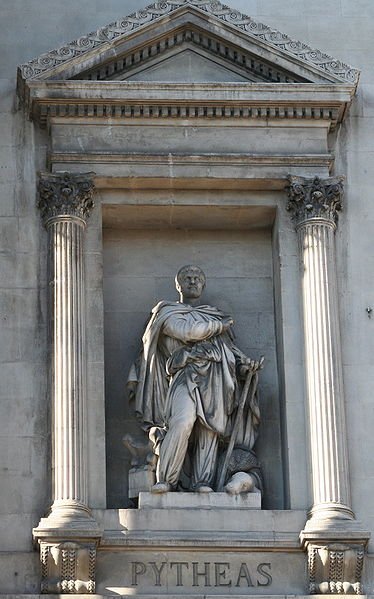
Pytheas of Massalia
Among the earliest navigators who are reputed to have sailed beyond the Pillars of Hercules into the Atlantic, the best known is perhaps Pytheas of Massalia. His account of a voyage to Britain and beyond has not survived, so we must rely on his critics for the few details that have come down to us. Two scholars who are known to have commented on Pytheas’s writings—the historian Timaeus and the cartographer Dicaearchus of Messana—both flourished around 300 BCE, so Pytheas must have made his voyage sometime in the latter part of the 4th century BCE.
Our principal sources for information on Pytheas are the Greek historian Polybius (fl 140 BCE) and the geographer Strabo (fl 20 BCE).
In treating of the geography of Europe I shall say nothing of the ancient geographers, but shall confine my attention to their modern critics, Dicaearchus, Eratosthenes, who is the most recent writer on geography, and Pytheas, who has misled many readers by professing to have traversed on foot the whole of Britain, the coastline of which island, he says, is more than forty thousand stades. And again by his stories of Thule and the countries in its neighbourhood, “in which,” he says, “there is neither unmixed land or sea or air, but a kind of compound of all three (like the jelly-fish or Pulmo Marinus), in which earth and sea and everything else are held in suspense, and which forms a kind of connecting link to the whole, through which one can neither walk nor sail.” This substance, which he says is like the Pulmo Marinus, he saw with his own eyes, the rest he learnt by report.
Such is Pytheas’s story, and he adds that, on his return thence, he traversed the whole of the coast of Europe from Gades [Cadiz] to the Tanais [Don]. But we cannot believe that a private person, who was also a poor man, should have made such immense journeys by land and sea. Even Eratosthenes doubted this part of his story, though he believed what he said about Britain [Βρεττανικήν], and Gades, and Iberia. I would much rather believe the Messenian (Euhemerus) than him. The latter is content with saying that he sailed to one country which he calls Panchaia; while the former asserts that he has actually seen the whole northern coast of Europe up to the very verge of the world, which one would hardly believe of Hermes himself if he said it. Eratosthenes calls Euhemerus a Bergaean [ie “as great a liar as Antiphanes of Berga”], yet believes Pytheas, though Dicaearchus himself did not ... Eratosthenes and Dicaearchus give mere popular guesses as to distances. (Polybius, Histories 34.5)
Polybius, in his Chorography of Europe, tells us that it is not his intention to examine the writings of the ancient geographers, but the statements of those who have criticised them, such as Dicæarchus, Eratosthenes (who was the last of those who [in his time] had laboured on geography), and Pytheas, by whom many have been deceived. It is this last writer who states that he travelled all over Britain [Βρεττανικήν] on foot, and that the island is above 40,000 stadia in circumference. It is likewise he who describes Thule and other neighbouring places, where, according to him, neither earth, water, nor air exist, separately, but a sort of concretion of all these, resembling marine sponge, in which the earth, the sea, and all things were suspended, thus forming, as it were, a link to unite the whole together. It can neither be travelled over nor sailed through. As for the substance, he affirms that he has beheld it with his own eyes; the rest, he reports on the authority of others. So much for the statements of Pytheas, who tells us, besides, that after he had returned thence, he traversed the whole coasts of Europe from Gades to the Don. (Strabo, Geography 2.4.1)
As I mentioned above, Rhys Carpenter believed that Pytheas was Avienus’s principal source for information on the British Isles, even though he is never once mentioned in the Ora Maritima. The Irish scholar T F O’Rahilly has argued cogently that Pytheas was Claudius Ptolemy’s principal source for information on Ireland in his Geography. He places Pytheas’s visit to Ireland around 325 BCE (O’Rahilly 40-42).
Conclusions
The following conclusions, I believe, can be drawn from all of this:
- Britain and Ireland were well populated by Celts by 500 BCE
- There is no documentary evidence that these islands were inhabited prior to this date
- There is no documentary evidence that these islands ever had pre-Celtic names or inhabitants
- Only archaeology can provide evidence for earlier habitation of these islands
References
- André Berthelot, Festus Avienus: Ora Maritima, Champion, Paris (1934)
- Julius Caesar, Commentarii de Bello Gallico 5.13
- Rhys Carpenter, Beyond the Pillars of Hercules: The Classical World Seen Through the
Eyes of its Discoverers, Tandem, London (1966) - Diodorus Siculus, Bibliotheca Historica 5.32.3
- Dionysius Periegetes, Οικουμενης Περιηγησις Google Books
- Philip Freeman, Ireland and the Classical World, University of Texas Press, Austin (2001)
- Charles Ginenthal, Pillars of the Past, Volumes I-IV, Forest Hill, New York (2003, 2009, 2010, 2013)
- Herodotus, The Histories, English translation (The History of Herodotus) by George Rawlinson, assisted by Henry Rawlinson & John Gardiner Wilkinson, D Appleton & Company, New York (1861)
- John T Koch, New Thoughts on Albion, Iernē, and the Pretanic Isles (Part One), Department of Celtic Languages and Literatures, Harvard University, JSTOR, Accessed 22 November 2016
- R A S Macalister (translator and editor), Lebor Gabála Érenn (The Book of Invasions), Irish Texts Society, Dublin, Parts I-V (1938, 1939, 1940, 1941, 1956)
- Christopher Meiklejohn, Peter C Woodman, “Radiocarbon Dating of Mesolithic Human Remains in Ireland”, Mesolithic Miscellany, Volume 22, Number 1, (October 2012)
- Notes and Queries: A Medium for Intercommunication, Fifth Series, Volume 2, p 211: “The Island of Iris,” (12 September 1874) Google Books
- Reverend W O’Halloran, Early Irish History and Antiquities, and the History of West Cork, Sealy, Bryers & Walker, Dublin (1916)
- Thomas F O’Rahilly, Early Irish History and Mythology, Dublin Institute for Advanced Studies, Dublin (1946)
- Pliny the Elder, Natural History, 2.169a (Book 2, Chapter 67)
- Polybius, Histories
- Adolf Schulten (editor), Avieni Ora maritima (Periplus Massiliensis saec. VI. a. C.), Bosch, Barcelona (1922)
- Edward Smedley, Hugh James Rose, Henry John Rose, B Fellowes, Encyclopaedia Metropolitana: Or Universal Dictionary of Knowledge, London (1845), Volume 10, pp 575-576 Google Books
- Strabo, Geographica 4.5.4
- John Taylor, Iron Age Britain, External Relations 1: Albion, The Earliest History, Camvlos Publications, Dublin (2016)
- James Ussher, Annales veteris testamenti, a prima mundi origine deducti, F Crook & G Bedell, London (1650)
Image Credits
- The Cliffs of Moher: Wikimedia Commons, EliziR, Creative Commons
- Robert Alexander Stewart Macalister - 1870-to-1950: Wikimedia Commons, Palestine Exploration Fund, Creative Commons
- Thomas Francis O’Rahilly: Source Unknown
- The Long Room: Wikimedia Commons, Photo by DAVID ILIFF. License: CC-BY-SA 3.0
- Adolf Schulten: Wikimedia Commons, Museo de Prehistoria de Valencia, Creative Commons
- The Ruins of Carthage: Wikimedia Commons, Calips (Patrick Giraud), Creative Commons
- Pytheas of Massalia: Wikimedia Commons, Rvalette, Creative Commons
